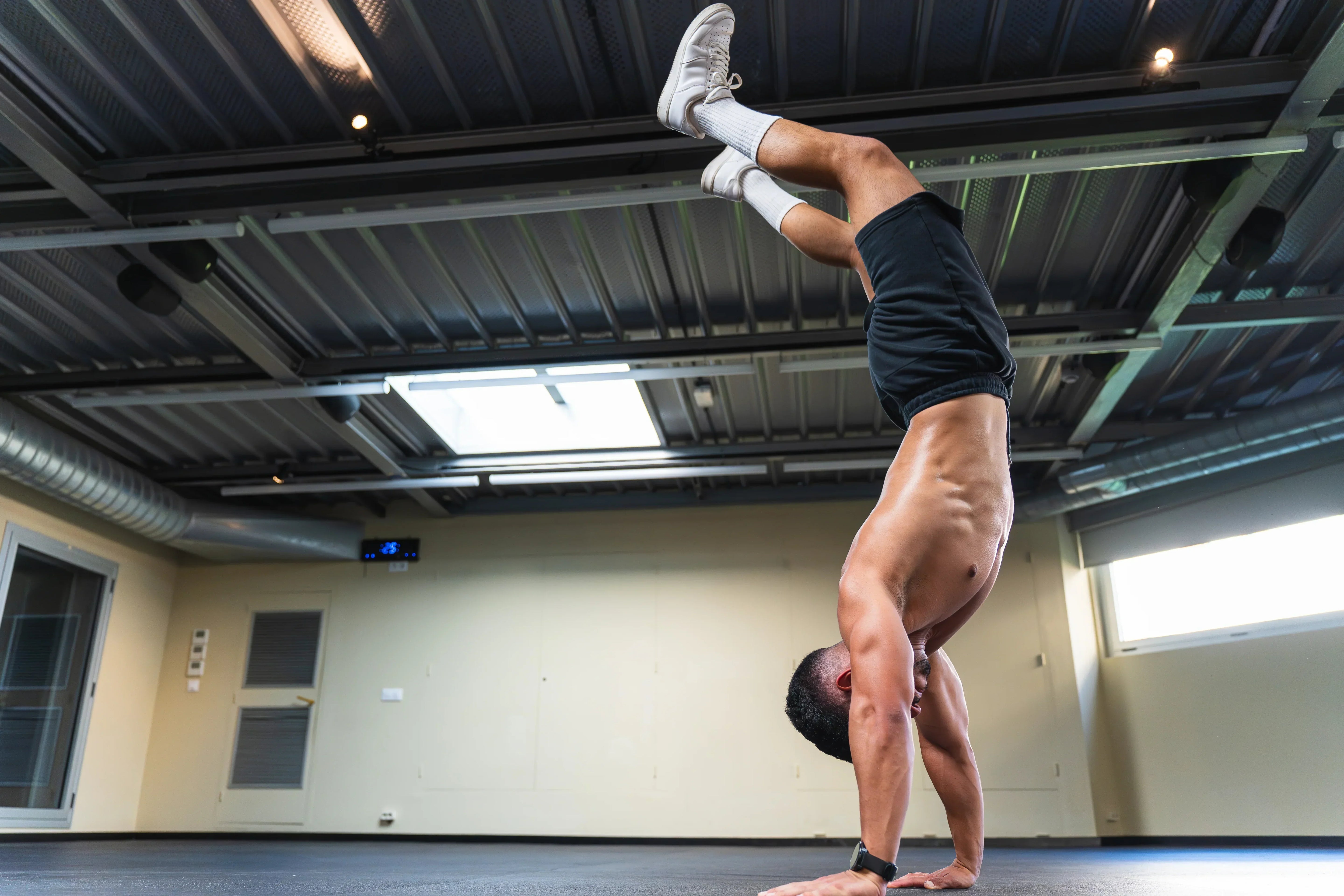What is Calisthenics:
Calisthenics is a type of exercise in which a person uses his /her body weight to get stronger and fitter. This type of exercise doesn't require any fancy equipment or weights. Instead, you use movements like push-ups, jumping jacks, squats, planks, and pull-ups to build strength, endurance, and flexibility. For a more balanced approach to fitness, many individuals pair calisthenics with yoga exercises for mindfulness, which help improve concentration, reduce stress, and enhance mind-body connection.
Calisthenics is a great way to stay fit and strong with minimal equipment.
Which Exercises are included in Calisthenics?
Calisthenics consists of simple exercises that use your body weight. Some of them are:
- Push-Ups: You lower and raise your body using your arms. This strengthens your chest and arms.
- Squats: You bend your knees and lower your body, then stand back up. This works your leg muscles.
- Jumping Jacks: You jump while spreading your arms and legs wide, then return to your starting position. It's a good cardio exercise.
- Pull-Ups: You hang from a bar and pull your body upward. This builds strength in your back and arms.
- Planks: You hold your body in a straight line while resting on your forearms and toes. It strengthens your core muscles.
Common Injuries in Calisthenics:

In calisthenics, like any physical activity, some common injuries can happen.
Strains and Sprains:
You might stretch or strain your muscles or ligaments when doing exercises. This can be painful and might need rest to heal.
Joint Pain:
Repeated movements, like pull-ups or push-ups, can sometimes lead to joint pain, especially in the shoulders, wrists, or elbows.
Overuse Injuries:
Doing too much of the same exercise too quickly can cause overuse injuries. It's essential to progress gradually to avoid this.
Bruises and Blisters:
When practicing skills like handstands or bar work, you might get blisters on your hands or bruises from falls.
Tendonitis:
Overworking your tendons, like in the elbows, can lead to tendonitis, which causes pain and inflammation.
Back Injuries:
Poor form in exercises like sit-ups or leg raises can strain your lower back.
Treatment:
Physical Therapy Treatments for Calisthenics Injuries
- Physical therapists check your injury, asking questions and examining you to understand what's wrong.
- They teach you specific exercises to strengthen and heal the injured area. These exercises are usually gentle and safe.
- They might recommend stretches to improve flexibility and reduce stiffness.
- Some therapists use hands-on techniques like myofascial release or joint mobilization to help with healing.
- They provide advice on how to prevent future injuries and maintain good form during exercises.
How to Prevent Injuries in Calisthenics:
Start Slow: Don't rush into hard exercises. Begin with easy ones to build strength and technique.
Proper Form: Make sure you know the right way to do each exercise. Good form reduces the risk of injury.
Warm Up: Before exercising, warm up your body with light movements or jogging. It prepares your muscles and joints.
Progress Gradually: Increase the difficulty of exercises slowly over time. Don't push too hard too soon.
Listen to Your Body: If something hurts or feels wrong, stop and rest. Pain is a sign that you need a break.
Signs of Overtraining or Micro-Injuries: Your body will always give you signs—tight muscles, dull aches, stiff joints, poor sleep, or a dip in performance. These may look small, but they’re often early warnings of bigger injuries. If your joints feel sore after every session or you’re constantly fatigued, that’s not “beast mode”—it’s your body asking for a break.
When to Rest vs. When to Push: Discomfort and pain are two different things. Muscle soreness from a tough workout is normal. Sharp pain or joint discomfort is not. If a movement feels wrong or forced, don’t push through. Rest doesn’t mean weakness—it means smart training. You grow when you recover.
Deload Weeks and Active Recovery: Every 4–6 weeks, scale things back. Reduce intensity, volume, or both. That’s a deload week. Use this time to walk, stretch, or work on mobility. Active recovery helps your body heal while keeping you moving. This habit alone can help you train longer and harder over time—without breaking down.
Stay Hydrated and Eat Well: Proper nutrition and hydration help your body recover and stay strong.
Get Guidance: If you're new to calisthenics, it's a good idea to learn from a coach or physiotherapist.



Share:
All You Need to Understand About Repetitive Strain Injury (RSI)
How To Avoid Tendinitis?
1 comment
How cure shoulder injury